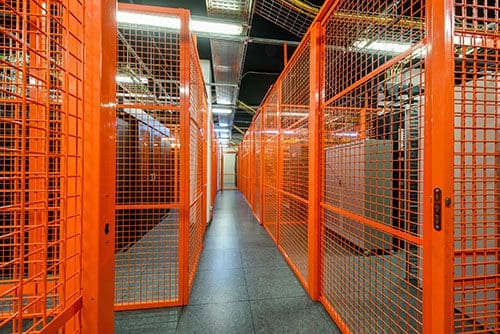Nightmares of the IT Department
Heart thumping, you run faster and faster, but it's never enough. You look back through the dim light, and a hideous claw reaches out, nearly grabbing you. You wake with a jolt. Serves you right for falling asleep at your desk. But the panic that was beginning to subside rises again when you realize your mind is awake, but your body is stuck in the nightmare.
You've heard about this sleep paralysis thing but laughed at it because it sounded silly and overly dramatic. Breathe, you tell yourself. It'll pass. So long as you don't get any calls or emails until this passes, you'll be just fine. Just then, you notice the biggest spider you've ever seen crawl towards your limp arm...

Overcoming IT Service Desk Fears & Frights
Anybody who has worked in IT has likely picked up a few scary stories and phobias. We totally get it. M Global team members have held all sorts of IT positions in our time and have seen a thing or two.
Many of these phobias and nightmare events come from real situations our team members have experienced or are afraid will happen. But we aren't about to hide under the covers and let fear win, so we've got some tips to help avoid and overcome dreaded IT ordeals. And if M Global provides hardware support for your environment, don't be surprised if you notice us using our tips — we know they work!
Working in IT Can Be Scary Business
The Itsy Bitsy Spider Crawled Up the Server Rack...

Arachnophobia (fear of spiders) consistently tops the list of most common fears, so if you're not a fan of spiders, you're in good company. Combine that fear with a neglected server room filled with dust and cobwebs, and you're in for an anxiety-inducing ordeal any time you have to deal with the equipment.
We've seen all kinds of server homes — everything from a spare closet to a giant colocation data center facility. We've noticed the smaller spaces tend to be more likely to be forgotten about and, therefore, tend to be a little more prone to our eight-legged friends.
M Global Tips: We've got a couple tried and true tips for dealing with creepy crawlies in your environment.
- Always check your surroundings before diving in. Did something scurry around the corner? Are you about to stick your hand on a forgotten half-eaten lollipop? Being aware and ready for action can prevent the jump scare you might get from a spider defending its territory.
- If you are replacing a part in spider-infested territory, keep the box the part comes in close by. It works great to smoosh spiders, or if you are the catch-and-release type, the box can work as a small holding pen for relocating the spider.
- Don't forget that your servers exist! Haha! But honestly, keeping your environment clean, dust & spiderweb-free, and clear of obstructions can also play a significant role in performance.
Access Denied: Cages, Server Rooms, & Other Enclosed Spaces
The door shuts behind you. You're locked in now. Don't think about how small the room is or the way the humming of the servers feels like it's getting louder and louder, closing in around you. Your heart is beating like crazy. Don't forget to breathe. Locked in, locked out, enclosed tight spaces, or stuck — a situation can quickly escalate from ordinary to panic-inducing when you don't have the access you need.
Whether the situation involves leaving your own badge/keys behind, not having access to begin with, or getting stuck in a data center enclosure until security does their rounds again, the odds of being locked in or out of a secured area at some point are pretty high.
Most people probably wouldn't be too thrilled about getting stuck in an enclosed space like an elevator, but getting locked in an enclosure or server room is no fun either. (Trust us. We've been locked in a server cage on more than one occasion, and it's no barrel of monkeys, especially if you have to use the bathroom.)

M Global Tips: To avoid getting locked in an enclosure and having to climb the cage like Spiderman, we recommend propping the door open with something you aren't likely to trip over or move (don't use the tool you will need!)
Whether it's an enclosure at a data center or a locked server room onsite, if someone else has to let you in with their keys or credentials, it's always a good idea to have their cell number just in case, and make sure you have your phone on you if you are allowed.
If you need to keep your badge or keys from disappearing, attach them to your person via a lanyard, badge reel, or clip. Get in the habit of checking for your badge/keys and phone before leaving a room (especially if you need them to reenter that space).
Shocking, Isn't It?

It's completely normal to be a little concerned about getting shocked while working on electronic equipment, and it happens more often than you'd think. The probability increases considerably when you are working on the inside of the system, tinkering with connections, or during an installation.
If you've got too many devices plugged in, you might get too much current passing through and end up with sparks (gotta love the classic power strips plugged into each other leading back to a single outlet).
M Global Tip: The good news is that there are some ways to lessen the likelihood of being electrocuted (besides making the new guy do it).
- Don't rush — work slowly and carefully.
- Make sure you connect the right thing to the right thing before you start. Experimentation could lead to a nasty shock, so proceed with caution!
- If you are working on the guts of a system, shut off the power to the system (if appropriate — check with your support provider before powering down).
People Are Scary: Social Anxiety & The IT Professional
Engineers, sys admins, and other IT professionals have a reputation of being more introverted and not your usual "people" people. Combine that with work interactions, usually involving stressed out colleagues and trying to find solutions to problems, and you can get a recipe for some serious social anxiety.
It's natural to default into troubleshooting mode, with regular communication becoming more of a challenge. Training and experience can lead to prioritizing "getting to the point," making small talk tricky, and sometimes, pure torture.

M Global Tip: Think about social interactions as a skill you must cultivate. There are many resources to help, and the more you practice, the better you'll get. Here are a couple of quick hacks we've learned:
- Prepare some fail-safe icebreakers that you can adjust based on who you are talking to. Finding common ground is a great place to start.
- Ask the person about something they talked about the last time you spoke. Try to remember things they've discussed in past conversations — it'll give you built-in talking points for your next interaction.
- Be genuine & curious. Unless you are an exceptional actor, people can usually tell whether a person cares or not. For a more satisfactory interaction for both of you, find topics you can be sincerely interested in discussing.
Failure Is Not An Option
The fear of failure can be paralyzing, and in the IT world, there are so few times when one can be 100% sure something will work the way it should (or break the way you expect it to, for that matter.) Nothing is legitimately fail-safe or foolproof because troubleshooting is experimental in many ways.
Even when it's not your fault, there are a thousand ways something could still go wrong. The good news is that if you are concerned about dropping the ball, you care, which is often half the battle.
Rather than let your mind race with all the disasters that could happen, check out some of the things we do at M Global to help us avoid the crash and burn of failure.
M Global Tips:
- Have a plan. You can't resort to Plan B if you don't have a Plan A.
- Know what the "worst that can happen" is. It can help with risk assessment and planning for potential catastrophes.
- Prepare. Prepare. Prepare. Things like a test environment, hardware redundancy, and spare parts on hand can make hiccups less problematic.
- Don't be a Negative Nelly. If you operate in a negative headspace from the get-go, it will be harder to focus on solutions. Swap the doom and gloom for positive affirmations — your coworkers will be so appreciative.
Let M Global Help
When things get dicey, we've got you covered!
We're all about turning disasters into successes and fears into an opportunity for growth. We love creating solutions for our clients, no matter how difficult the challenge.
We want you to consider us an extension of your team, a trusted resource and an advisor. Fill out the form or give us a call at 855-304-4600 to find out more.
Got an IT Nightmare? Let Us Help.
Suggested Content







